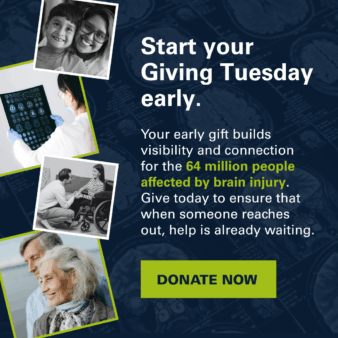Traumatic Brain Injury as An Invisible Disability
Categories: ACBIS Insider
By Brent Masel, MD
In March 2009, the Brain Injury Association of America (BIAA) first published a position paper entitled: “Conceptualizing Brain Injury as a Chronic Disease.” The purpose of the paper was to recognize that a TBI is not a solitary event, and that not everyone recovers completely. It was believed that the scientific and health care community needed to recognize the chronicity of TBI and address those issues in research, clinical care, and funding. As you will see further in this paper, the scientific community has embraced this idea. Unfortunately, funding, and as a result, clinical care has lagged behind.
A report titled “TBI: A Roadmap for Accelerating Progress” from the National Academies of Sciences, Engineering and Medicine in 2022 drew a similar conclusion. It stated TBI care in the U.S. often “fails to meet the needs of individuals, families and communities affected by this condition.” And most importantly, it stated that “high-quality care for TBI requires that it be managed as a condition with both acute and long-term phases.”
The big goal this year for BIAA is the call for brain injury to be recognized, treated and covered as a chronic health condition. At present, the Center for Disease Control and Prevention (CDC) defines chronic diseases as conditions that last more than a year and require ongoing medical treatment and/or limit activities of daily living. Although CDC recognizes several other conditions, including arthritis, cancer, diabetes, epilepsy, heart disease, lupus, and stroke as chronic health conditions, sadly, the 5 million Americans who live with the residual effects of a brain injury are not considered to have such a problem. Although Medicare has 21 chronic conditions, once again, brain injury is not on the list. Perhaps part of the problem is that in many cases, the problems manifest in chronic TBI are invisible, and are therefore “out of mind.”
Invisible problems
Individuals with chronic TBI (particularly moderate to severe) have a reduced life expectancy of seven years. They run a significantly increased risk of epilepsy, and sleep disorders are common. Further, patients who have sustained a TBI run a significantly greater risk of developing a neurodegenerative disease such as Alzheimer’s disease, Parkinson’s disease, and chronic traumatic encephalopathy. Interestingly, the risk of dementia is profoundly greater if the individual has post traumatic epilepsy. History of TBI increases the risk for eventually having a stroke and a brain tumor. The development of psychiatric disease years after TBI is a well-recognized problem amongst physicians who specialize in this disorder. All these problems may appear invisible to outsiders, but certainly not to the individual with the brain injury.
Individuals symptomatic from chronic TBI have a 35 to 40 percent chance of having dysfunction of the pituitary gland, resulting in hormonal imbalance and deficiency and should be checked for these issues by their physician. Recent studies have also shown that individuals with chronic TBI do not absorb the essential amino acids from their diet compared to the non-injured population, which leads to chronic malnutrition and all the medical complications that come with that condition. We have also found an abnormal microbiome in the gut of this group. It is the microbiome (gut bacteria) that control what is absorbed into the system.
Ten years ago, the government funded TRACK TBI, a multi-center data analysis study following 3,000 individuals with TBIs across the severity spectrum for 12 months. Multiple papers were produced from that study. It was found that more than 50 percent of individuals reported functional impairment at 12 months, as did almost 75 percent of patients with mild TBI-induced post-concussion syndrome. Unemployment was a problem for 17 percent of individuals one year post-mTBI.
Model Systems data from those who survived 15 years post-injury has shown that although a large percentage of chronic TBIs are stable, a significant number may show decline.
The 5 million individuals living with a chronic TBI need your help. Brain injuries are frequently invisible to the casual observer, and therefore they do not get the necessary resources needed to solve this incredibly complex riddle. We must pull together and have TBI formally designated as a chronic health condition. TBI must be researched, treated, and administered just like any other chronic health condition.
Dr. Masel is the Executive Vice President for Medical Affairs and the Centre for Neuro Skills and the National Medical Director of the Brain Injury Association of America.

